Video: Before and after satellite images of Aleppo in Syria 'show human rights violations'
The images, taken by Amnesty International over the course of nine months, purport to show major destruction ordered by President Bashar al-Assad's government forces
Video: Before and after satellite images of Aleppo in Syria 'show human rights violations'
Show all 8Your support helps us to tell the story
From reproductive rights to climate change to Big Tech, The Independent is on the ground when the story is developing. Whether it's investigating the financials of Elon Musk's pro-Trump PAC or producing our latest documentary, 'The A Word', which shines a light on the American women fighting for reproductive rights, we know how important it is to parse out the facts from the messaging.
At such a critical moment in US history, we need reporters on the ground. Your donation allows us to keep sending journalists to speak to both sides of the story.
The Independent is trusted by Americans across the entire political spectrum. And unlike many other quality news outlets, we choose not to lock Americans out of our reporting and analysis with paywalls. We believe quality journalism should be available to everyone, paid for by those who can afford it.
Your support makes all the difference.Satellite images have laid bare the suffering inflicted on Syria's largest city, a London-based rights group said Wednesday, cataloguing hundreds of damaged or destroyed houses and more than a thousand roadblocks.
Amnesty International said it had worked with the American Association for the Advancement of Science to analyze pictures of Aleppo taken by aerospace imagery providers DigitalGlobe and Astrium for signs of destruction in the metropolis, which has been the scene of months of vicious fighting between forces loyal to Syrian President Bashar Assad and the rebels fighting to topple him.
“The images are a snapshot of a population under brutal siege,” Amnesty's Christoph Koettl said in a statement.
The siege has its roots in the largely peaceful protests against Assad's rule which broke out in early 2011. The regime responded with brutal force, and the protests morphed into an armed uprising and a civil war. The rebels launched an ambitious attempt to capture Aleppo last year, but they have been unable to solidify their hold on the city, which has since become the object of a bloody tug of war.
Many of the photographs released by Amnesty show a general view of the city, with red dots meant to indicate damage and destruction. The rights group said the damage was “emblematic of the relentless bombardment” and said analysis of the satellite imagery showed the destruction was “severely lopsided,” with opposition-controlled neighborhoods overwhelmingly hit.
Several close-up images showed what the rights group said was the damage caused by the Assad government's ballistic missile attacks on civilian areas. “Before” photographs from Aleppo neighborhoods of Ard al-Hamra, Tariq al-Bab, and Jabal Badro showed tightly-packed houses casting late afternoon shadows over streets and parkland. “After” photographs showed block-wide patches of destruction where the rights group said missiles had slammed into residential areas.
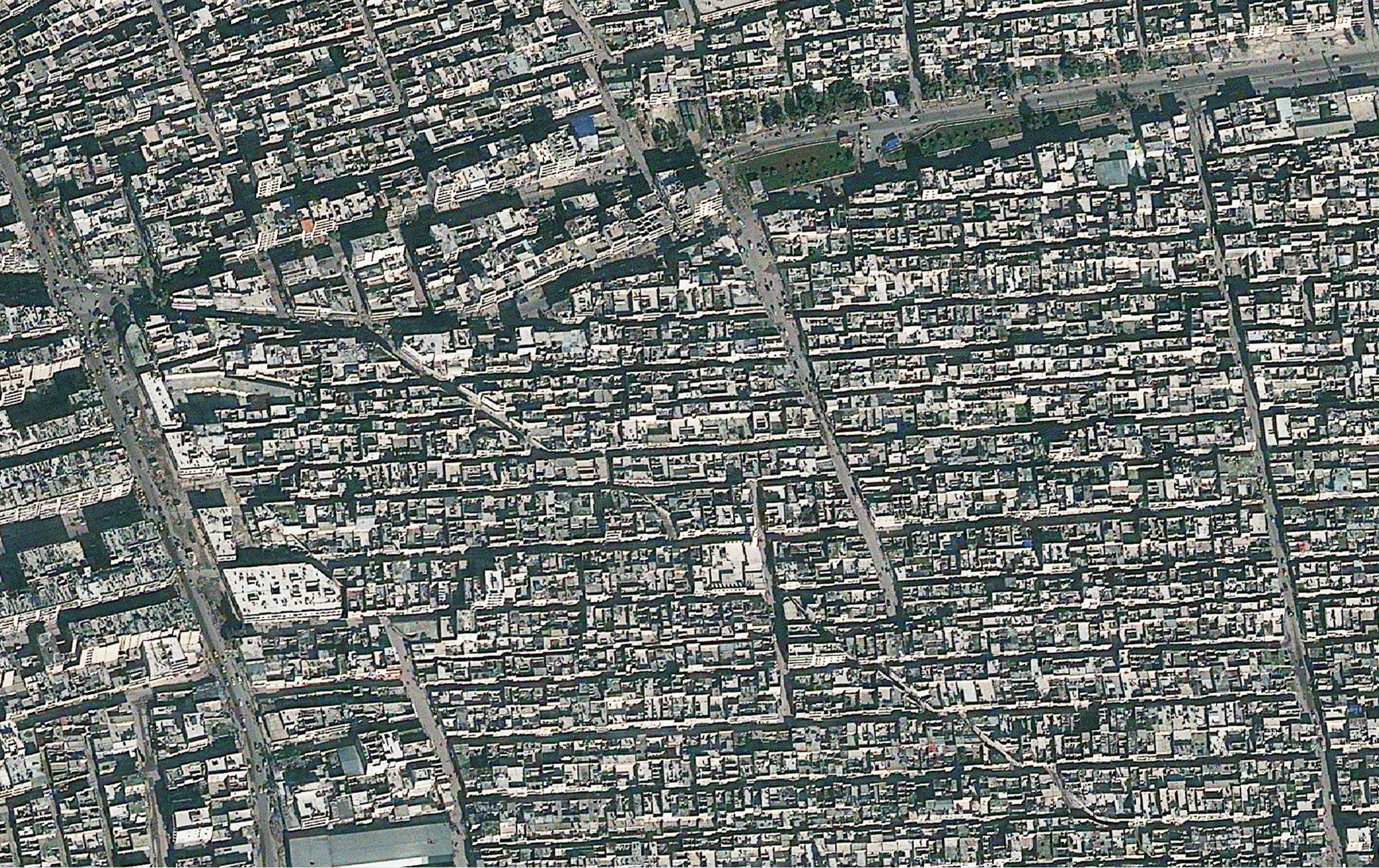
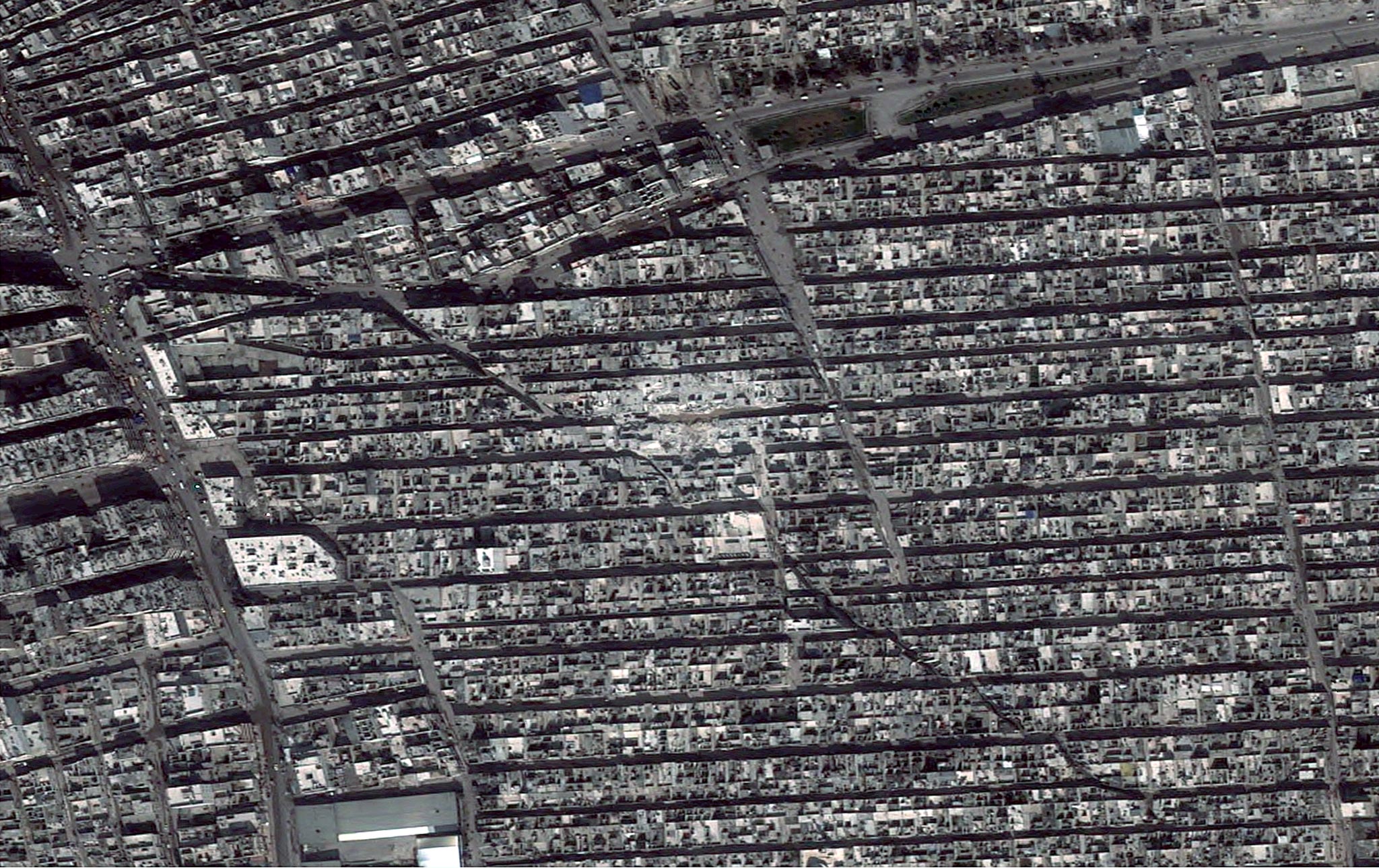
From space, the bright white of the rubble against the dark outlines of the houses looked like small mounds of crushed chalk on an open newspaper. Up close, Amnesty said the devastation had been catastrophic.
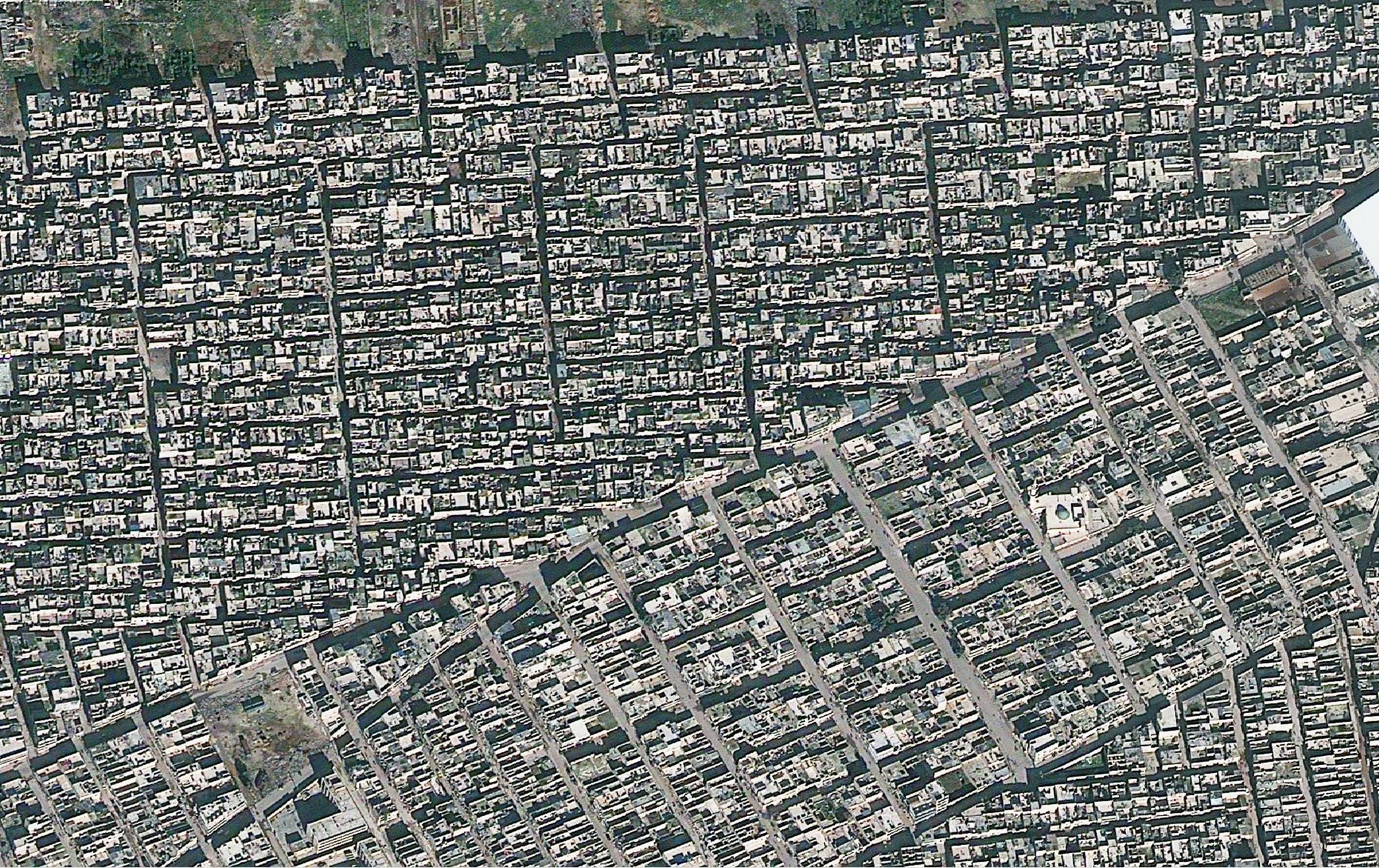
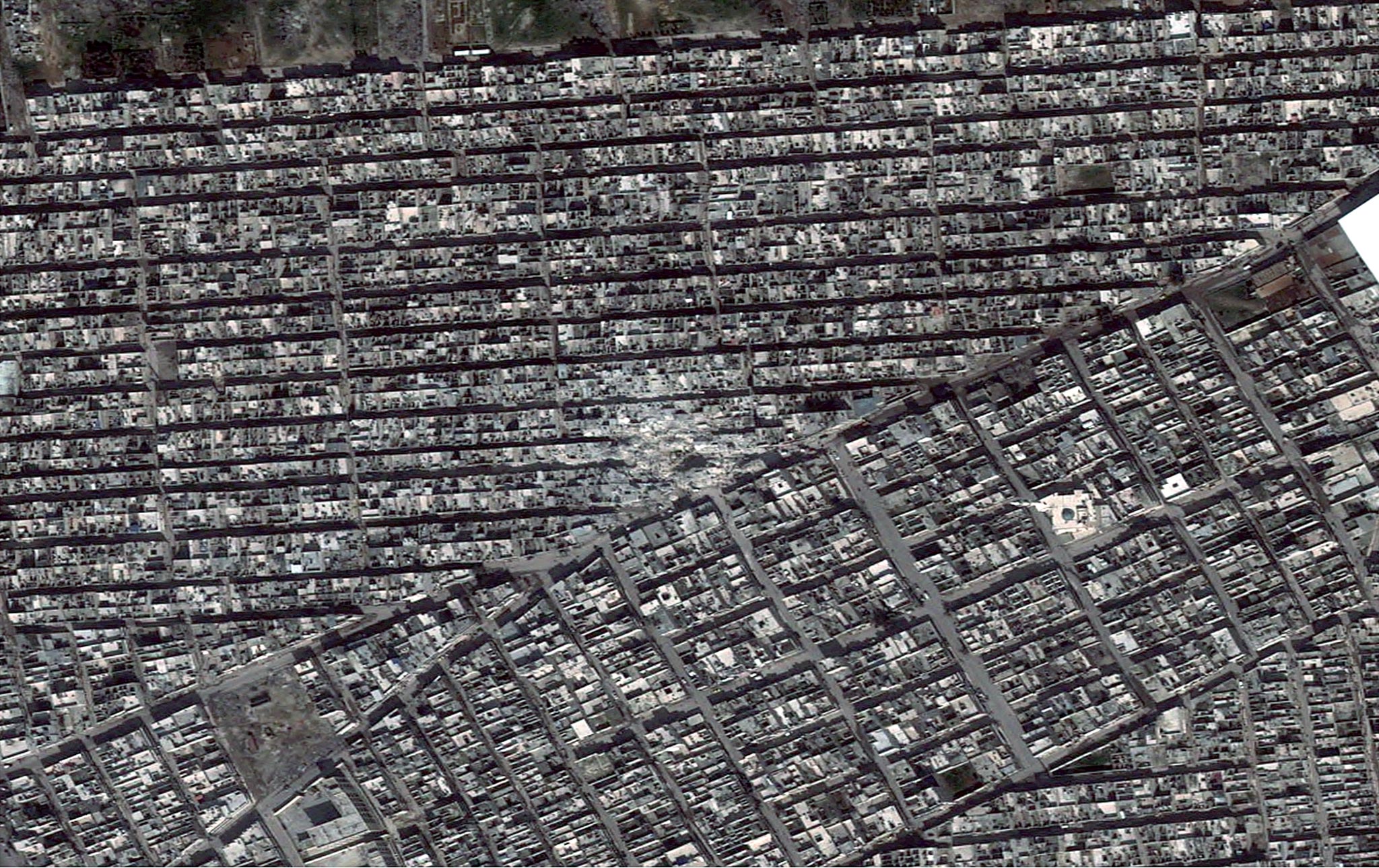
In Jabal Badro, a missile killed scores of people when it hit on the evening of Feb. 18, the rights group said. In Ard al-Hamra and Tariq al-Bab, it said twin missile strikes on Feb. 22 left at least 117 residents dead.
Another set of images, from March and May of this year, showed what the rights group said was part of the widespread damage within the Old City of Aleppo, home to a massive medieval citadel, and various venerable religious schools, palaces, baths, and trading posts.
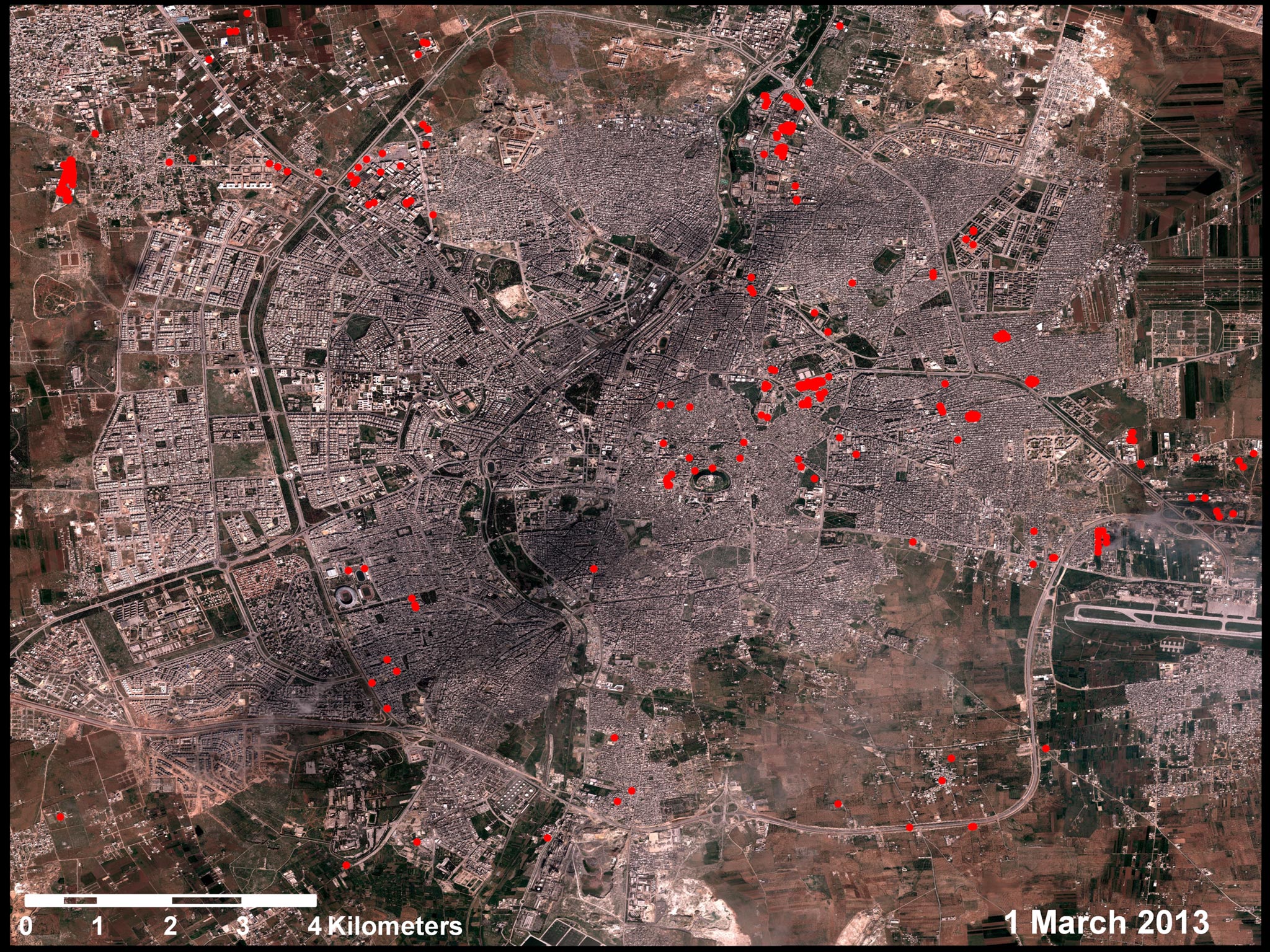
The one taken in March showed the famous leaning minaret of Aleppo's Great Mosque casting a long shadow over an adjoining plaza.
In the image from May the shadow was gone; the 11th-century architectural treasure had been obliterated.
AP
Subscribe to Independent Premium to bookmark this article
Want to bookmark your favourite articles and stories to read or reference later? Start your Independent Premium subscription today.
Join our commenting forum
Join thought-provoking conversations, follow other Independent readers and see their replies
Comments